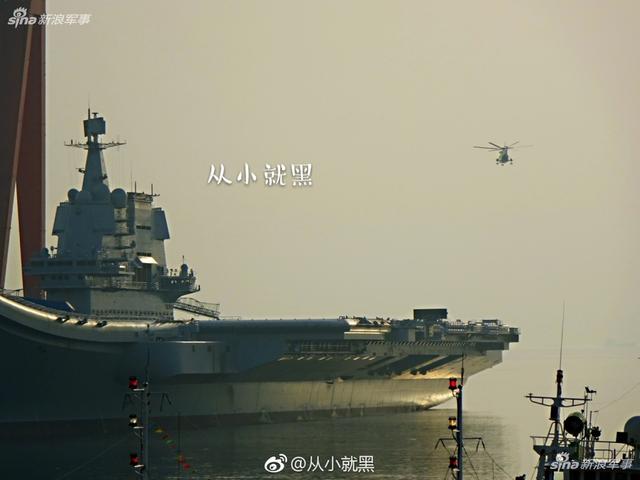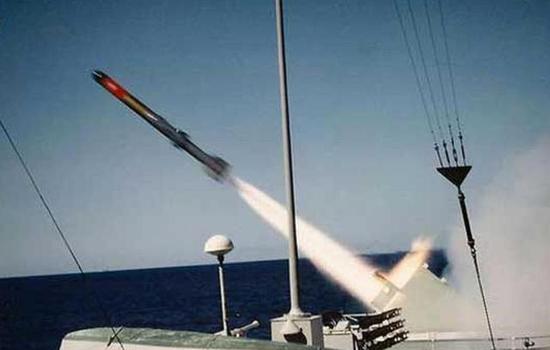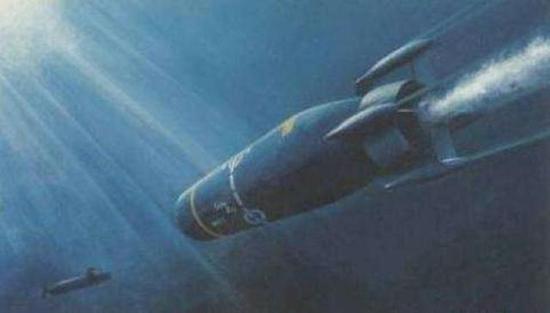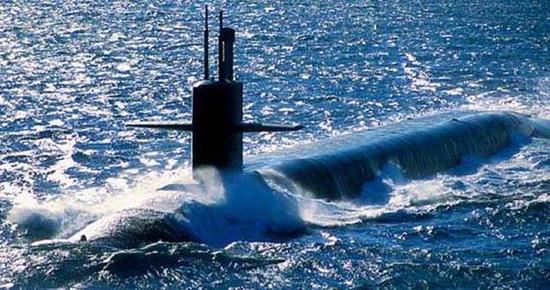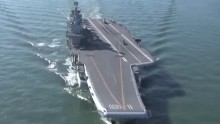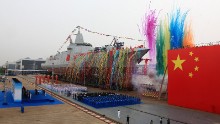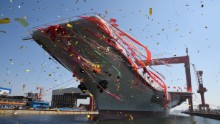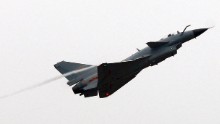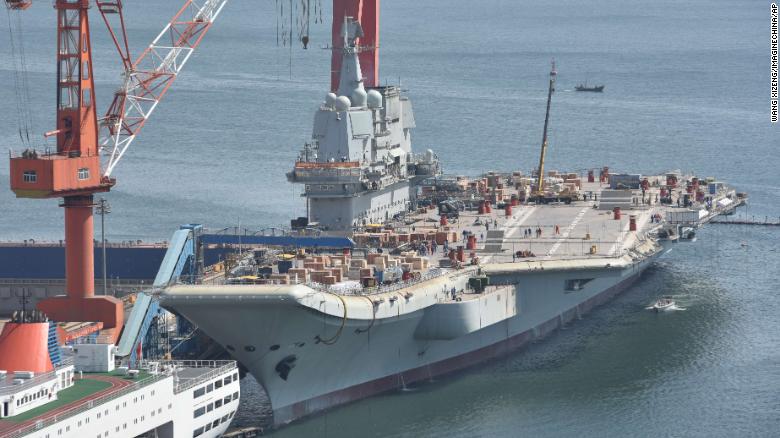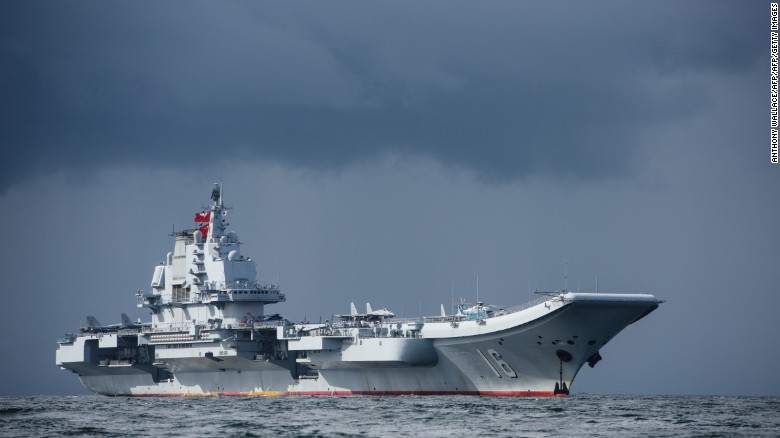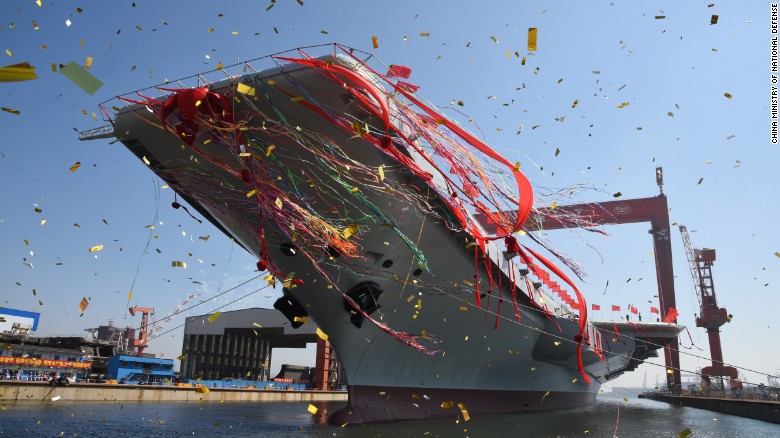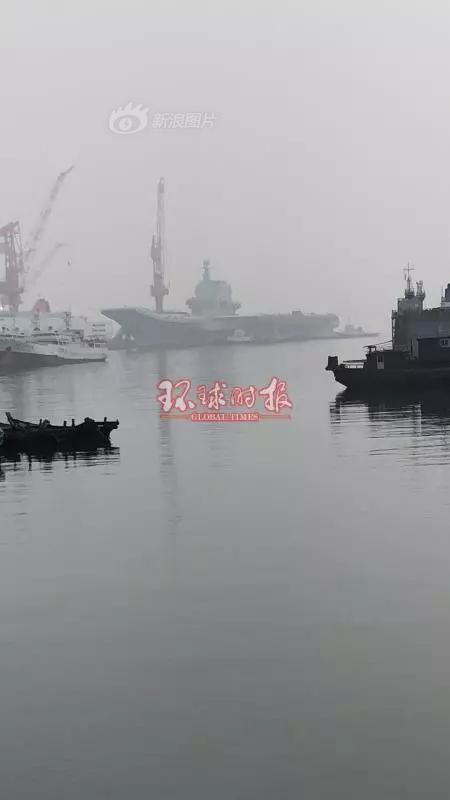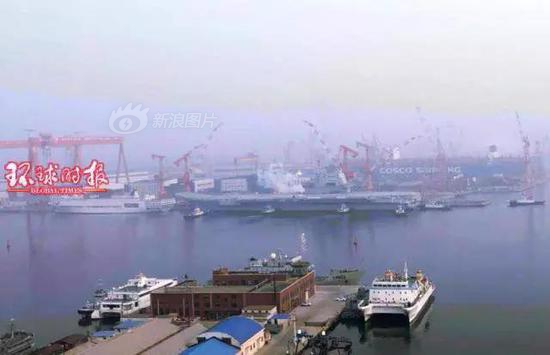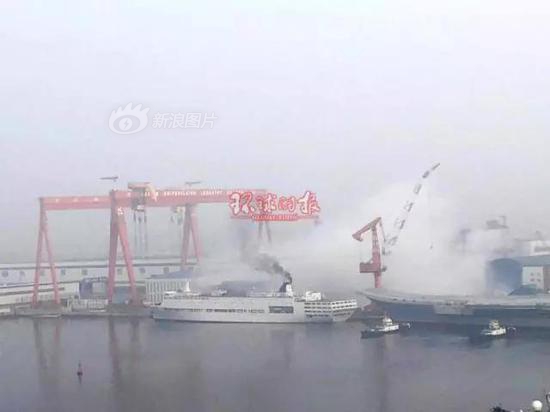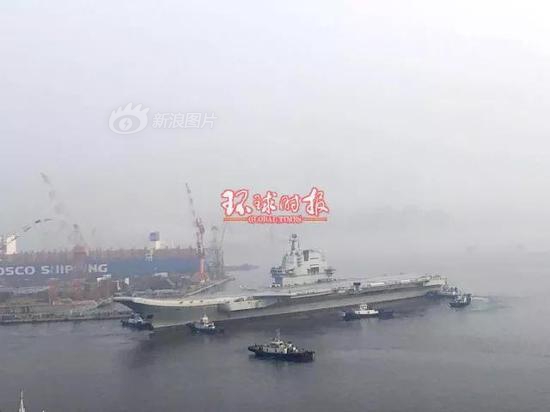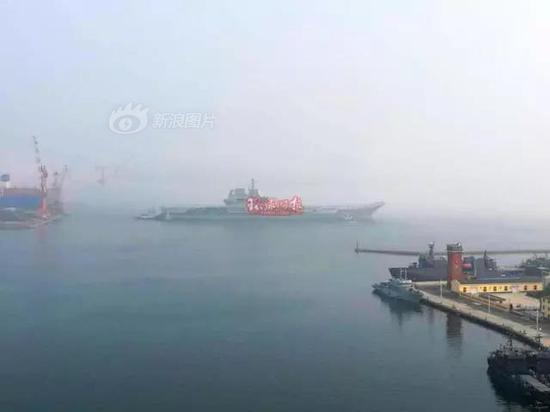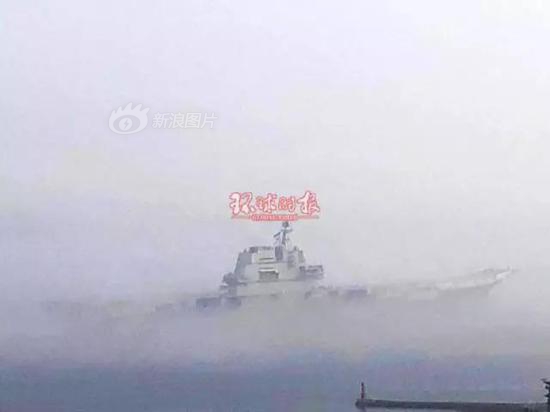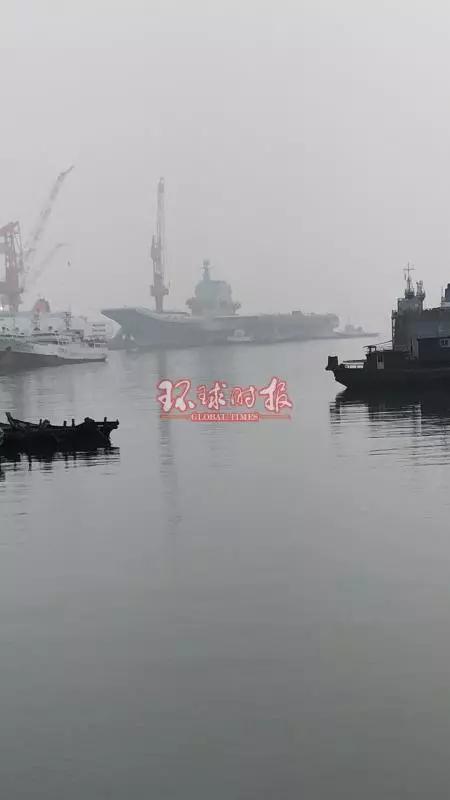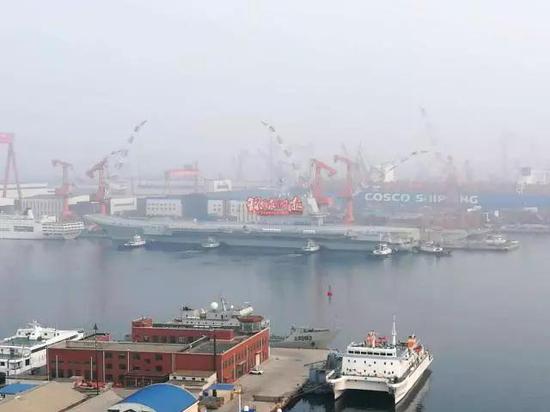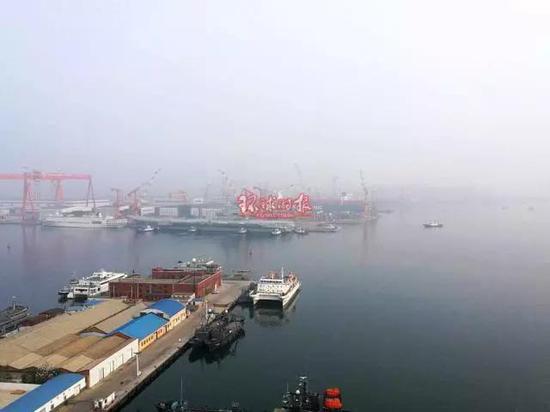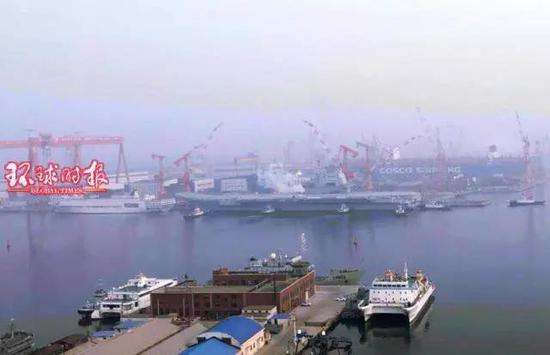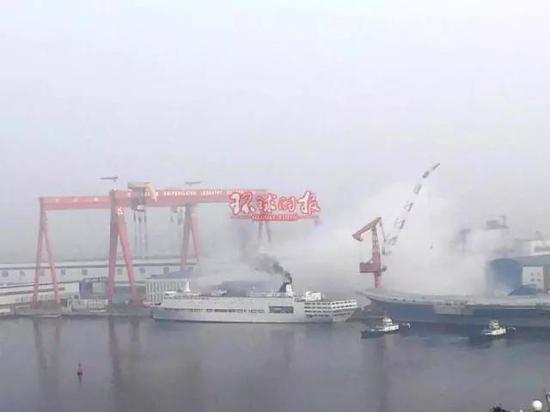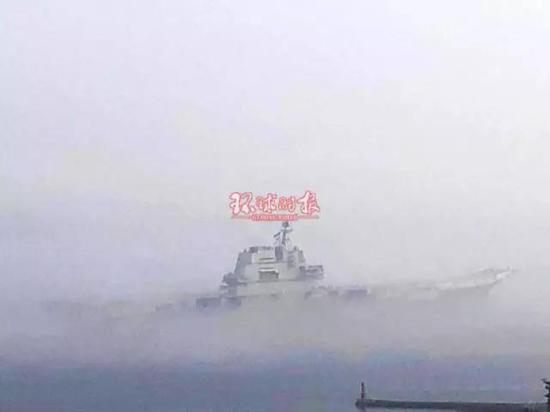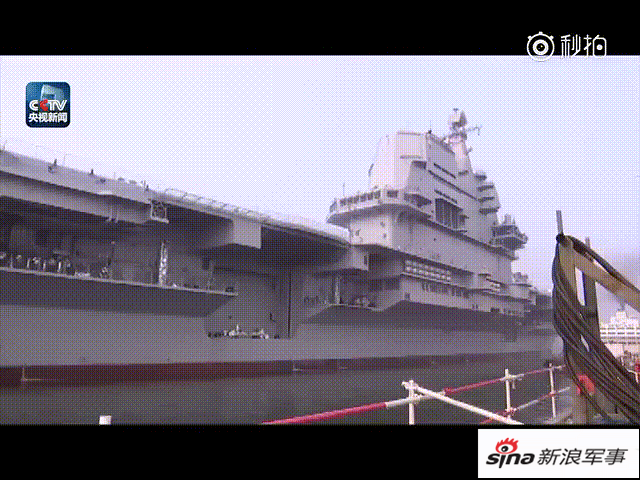http://www.xinhuanet.com/photo/2018-05/13/c_1122824693.htm
我国第二艘航母首次出海试验
2018年05月13日 10:57:37 | 来源:
新华网
5月13日,我国第二艘航母从大连造船厂码头启航,赴相关海域执行海上试验任务,主要检测验证动力系统等设备的可靠性和稳定性。新华社发(李刚 摄)
我国第二艘航母首次出海试验
2018年05月13日 10:57:37 | 来源:
新华网
5月13日,我国第二艘航母从大连造船厂码头启航,赴相关海域执行海上试验任务,主要检测验证动力系统等设备的可靠性和稳定性。新华社发(胡锴冰 摄)
我国第二艘航母首次出海试验
2018年05月13日 10:57:37 | 来源:
新华网
5月13日,我国第二艘航母从大连造船厂码头启航,赴相关海域执行海上试验任务,主要检测验证动力系统等设备的可靠性和稳定性。新华社发(胡锴冰 摄)
https://edition.cnn.com/2018/05/12/asia/china-aircraft-carrier-trial-intl/index.html
China's first homegrown aircraft carrier heads out for sea trial


By
Ben Westcott and
Brad Lendon, CNN
Updated 0404 GMT (1204 HKT) May 13, 2018
Current Time 0:21
/
Duration Time 2:26
Now Playing China's push to...
China seizes US underwater drone
Remembering China's first female jet pilot
China building new aircraft carrier
U.S. aircraft carrier stalked by submarine
The future of China-US relations in Trump era
China shows off new stealth fighter jet
Now Playing
China's push to modernize its military
Rare look inside China's aircraft carrier
Huge new Chinese warship launches
The only aircraft carrier built in China
Chinese jets buzz US aircraft -- again
China seizes US underwater drone
Remembering China's first female jet pilot
China building new aircraft carrier
U.S. aircraft carrier stalked by submarine
The future of China-US relations in Trump era
China shows off new stealth fighter jet
China's push to modernize its military
Rare look inside China's aircraft carrier
Huge new Chinese warship launches
The only aircraft carrier built in China
Chinese jets buzz US aircraft -- again
China seizes US underwater drone
(CNN)China's first domestically built aircraft carrier began sea trials on Sunday, a historic step in the country's mission to build a navy capable of rivaling the world's leading maritime powers.
The new aircraft carrier, temporarily named Type 001A, sailed out at around 7 a.m. in Dalian, in the northeast province of Liaoning, according to reports in Chinese state media.
The 50,000-tonne ship will become the country's second aircraft carrier, and the first to be entirely built and designed inside of China, when it joins the navy sometime before 2020.
The carrier's maiden sea trial follows a speech given by Chinese President Xi Jinping on April 12, in which he announced plans to build a
"world-class" navy under the banner of the Chinese Communist Party.
China's first carrier, the Liaoning, a retrofitted Soviet-era vessel bought from the Ukraine, was hailed as the fulfillment of a
"70-year dream" of the Chinese nation when it launched to much celebration in 2012.
But experts said while the new aircraft carrier will dramatically boost China's military power in the Asia region, its technology was still outdated and lagged far behind the world's naval superpower, the United States.
"This is, in and of itself, not designed to be some frontal challenge to US power in the Asia Pacific, because it simply isn't in the class of America's aircraft carriers," Sam Roggeveen, senior fellow at Sydney's Lowy Institute, told CNN.
Chinese workers labor on the deck of China's first domestically built aircraft carrier, the Type 001A, at the shipyard in Dalian on 16 April.
Bigger and better
China's second aircraft carrier will be "modernized" compared to its first, experts said, with a design that's bigger and heavier to allow it to carry more planes.
The basic design for the new aircraft carrier is clearly modeled heavily on the Liaoning, including the signature ski-jump inclination at the front from which aircraft lift off.
The ship, which is roughly 315 meters (1,033 ft) in length and 75 meters (246 ft) wide, uses conventional rather than nuclear propulsion, and is believed to displace 50,000 tonnes, according to reports in state media.
Speaking to CNN, RAND Corporation senior international defense research analyst Timothy Heath described the design as generally easier to build and to operate aircraft from.
But expert analysis of pictures and satellite images of the new China-built vessel reveals it has been altered in subtle ways, possibly allowing it to accommodate up to eight additional aircraft.
By comparison, the Liaoning is thought to currently carry around 30 warplanes, including fixed wing aircraft and helicopters.
According to Peter Layton, visiting fellow at the Griffith Asia Institute, the Liaoning was intended to act as more of a training vessel, whereas the new ship is likely to be deployed in combat missions, positioning China alongside a select number of countries with global naval capabilities, including Russia, France, the United States, and the United Kingdom.
As of this year, the United States Navy fields 11 nuclear-powered aircraft carriers, more than any other nation in the world.
The US ships feature "catapult" technology, in which a gear attached to a steam-powered piston or an electromagnetic rail gets aircraft up to flight speed as they leave the deck.
Aircraft launched by catapults can get airborne and with greater quantities of fuel and ammunition, giving them an advantage over Chinese planes, which rely on their own power when lifting off from the Liaoning's ski-jump.
China's sole aircraft carrier, the Liaoning, arrives in Hong Kong waters on July 7, 2017.
Still more sea trials needed
Once an aircraft carrier passes its sea trials, that doesn't mean it's ready for combat. Although the type 001A has successfully left the ship yard, plenty of problems can, and most likely will, arise.
In late 2017, the United Kingdom's new aircraft carrier, the HMS Queen Elizabeth, embarrassingly
sprung a leak during sea trials and needed repairs.
In the United States, the USS Gerald R Ford, the US Navy's newest carrier and the most expensive warship ever built at $13 billion, has a host of problems.
The Ford was commissioned into the fleet in July 2017, however, a January 2018 report from the Pentagon's Operational Test and Evaluation Office says the 100,000-ton warship is plagued with troubles in critical systems, including its catapults that launch planes, the arresting gear which catches them upon landing, and its radar.
Those deficiencies "make the ship more vulnerable to attack, or create limitations during routine operations," the report said.
Other problems are more mundane, but show just how many things have to be ironed out in a new warship: The test office report says the Ford is expected to be short of spaces for its crew to sleep.
China's second aircraft carrier was launched at a ceremony on April 26, 2017
Future of the Chinese navy
China may still be a long way from presenting a global challenge to the US Navy, but as a regional power its military program is moving fast.
With a military budget in 2018 of $175 billion dollars,
up 8% on the year before, the Chinese military is pushing ahead rapidly with its modernization drive.
Between 2010 and 2017, the Chinese Navy increased its complement of ships from 210 to 320, Boston College professor of political science Robert Ross told CNN, including another 18 in 2016 alone.
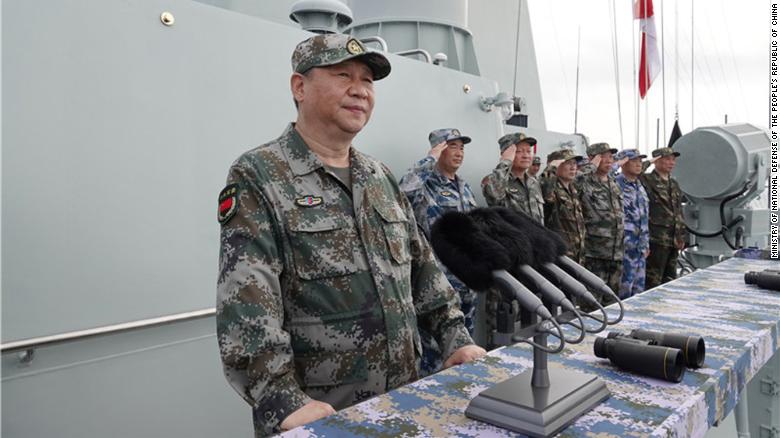
Xi Jinping's China makes a show of force in South China Sea
By comparison, the active US fleet currently sits at approximately 272 ships, he said.
Meanwhile, the PLA has begun work on its third aircraft carrier, according to
the South China Morning Post, which is rumored to employ a more advanced launch system different from the ski-jump.
"The US Navy and the capability for the US Navy will still be superior to the Chinese Navy in 10 years, but the size of the Chinese fleet will be larger and they'll have closed the gap in technology and training," Ross said.
China has made no secret of its desire to build
a modern, "blue-water" navy which could operate around the world.
"If you look at China's acquisitions of facilities in the Indian Ocean and in Eastern Africa, they're quickly developing the capability to maintain a naval presence in distant waters," Ross said.
Still, the main focus of the PLA Navy in the near future is expected to be dominating the waters around the Chinese mainland, including the South China Sea.
China is fortifying islands in the region with facilities that could host military aircraft, creating what some experts have called "unsinkable aircraft carriers."
Last week, US intelligence assessed that there is a high probability
the Chinese military had deployed anti-ship and anti-aircraft missiles to three artificial islands there during recent military drills.
Compared to the rest of the Asia region, Ross said, only Japan can currently equal the Chinese navy and even then they probably only had about five years before they too would be surpassed.
CNN's Steve George contributed to this report
